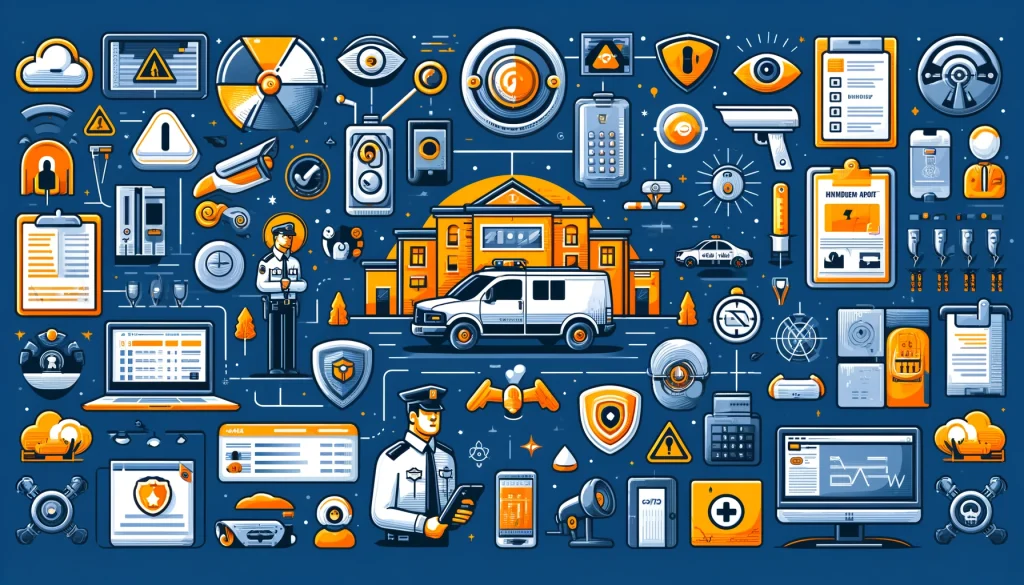A Patrol & Incident Management System is a software solution designed to streamline and enhance the management of security patrols and incidents by security personnel. Here are the key components and functionalities typically found in a patrol and incident management system:
Guard Tour Monitoring:
Track the movements of security guards or patrol officers during their patrols.
Utilize mobile devices, RFID tags, or GPS tracking to record patrol routes and checkpoints.
Monitor guard tour progress in real-time and receive alerts for missed checkpoints or deviations from assigned routes.
Incident Reporting:
Allow security personnel to report incidents, accidents, or suspicious activities encountered during patrols.
Capture incident details such as location, time, nature of incident, involved parties, and witness statements.
Attach photos, videos, or audio recordings as evidence to support incident reports.
Dispatch and Response:
Receive incident alerts and dispatch security personnel or response teams to the scene.
Prioritize incidents based on severity, urgency, or threat level.
Communicate with on-site personnel, emergency services, or law enforcement agencies to coordinate response efforts.
Resource Management:
Manage resources such as security personnel, vehicles, equipment, and surveillance assets.
Assign patrols, shifts, and duties to security personnel based on availability, skills, and workload.
Track resource utilization, availability, and maintenance schedules to ensure operational readiness.
Electronic Incident Logs:
Maintain electronic incident logs to record all reported incidents, responses, and resolutions.
Store incident data securely and maintain a complete audit trail for compliance and liability purposes.
Search and retrieve historical incident records for analysis, reporting, or legal documentation.
Dashboard and Reporting:
Provide dashboards and reporting tools for real-time monitoring and analysis of patrol activities and incident trends.
Generate reports and analytics on patrol performance, incident response times, incident types, and incident resolutions.
Monitor key performance indicators (KPIs) such as incident response rates, patrol coverage, and incident severity levels.
Compliance and Documentation:
Ensure compliance with regulatory requirements, industry standards, and contractual obligations.
Generate compliance reports, incident summaries, and documentation for stakeholders, clients, or regulatory agencies.
Maintain documentation of training records, certifications, licenses, and permits for security personnel.
Integration and Collaboration:
Integrate with other security systems and applications, such as video surveillance systems, access control systems, and alarm monitoring systems.
Collaborate with external stakeholders, such as property managers, facility owners, or law enforcement agencies, through data sharing and communication channels.
Enable seamless data exchange and collaboration to enhance situational awareness and incident response coordination.
Mobile Accessibility:
Provide mobile applications or web-based portals for security personnel to access patrol schedules, incident reports, and communication tools on-the-go.
Allow security personnel to submit incident reports, capture evidence, and communicate with dispatchers or supervisors from mobile devices.
Enhance flexibility and responsiveness by enabling mobile access to patrol and incident management functionalities.
Security and Privacy:
Implement security measures to protect sensitive data, incident reports, and communication channels from unauthorized access or breaches.
Ensure compliance with data privacy regulations (e.g., GDPR, CCPA) and industry standards for data encryption, access controls, and data retention.
Conduct regular security audits and vulnerability assessments to identify and address potential security risks.





